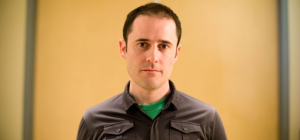Falling Asleep and the Keys to the Kingdom of Heaven
Note: If you would prefer to listen to this, the podcast version is at the bottom of this post.
 Are you missing important clues that can guide you on your life journey?
Are you missing important clues that can guide you on your life journey?
Do you sometimes sleep-run through your days, your mind filled with all you have to do, not noticing the people and particulars around you?
And truthfully…do you only half-listen to those speaking to you?
When we do these things, we fail to notice important clues the universe provides us. Just as the hero on the Hero’s Journey must remain alert for clues that can mean life or death, we must remain alert if we are to recognize clues to important issues we are wrestling with. We must practice being present if we are to hear answers to questions we’ve been asking.
When we navigate our days on autopilot, when we remain lost in our thoughts and our drama, we tune out potentially life-altering perspectives and wisdom, offered in the form of throw away lines from the person who chats us up at Starbucks, or the unexpected experience in the checkout line.
I was reminded of the importance of staying awake and practicing the discipline of mindfulness at the 2013 Wisdom 2.0 conference in San Francisco.
At the conference, I attended a lunchtime webcast presentation by Eckhart Tolle. The webcast was held in a cavernous hall of the exhibition center in San Francisco. Between the timing—right after lunch—my brain being on information overload, the live cast being held in a dark hall, and… Eckhart Tolle having shall we say…a low-key, hypnotic presentational style, I found it hard to stay focused on what he was saying.
OK, to be truthful, I found it hard to stay awake.
My mind drifted, farther and farther afield until I was semi-conscious. Suddenly, my torpid slumber was pierced by these words “…and when you can do that, you will have the key to the kingdom of Heaven.”
What was that?
The key to the kingdom of Heaven?
Did he just say “that’s how you get the keys to the kingdom of Heaven”?
What is it that you have to do to have those Key?
In a nanosecond, I had shifted from a somnolent lump to a full on, hyper-alert student.
But it was too late.
He had moved on.
I turned to the woman next to me, confessed I had been dozing and asked her what the keys to the kingdom of Heaven were.
She didn’t know. She too had been asleep.
While hungering for what Eckhart Tolle had said, I also stood back and smiled at what a great metaphor my experience was for how we miss out on important messages—messages that might prove life-changing–when we are not awake, when we are not present.
Even more interestingly, when I did an internet search on Eckhart Tolle and “keys to the kingdom of Heaven”, here’s what I found at http://voices.yahoo.com/eckhart-tolle-god-5887512.html?cat=34
In Eckhart Tolle’s philosophy, accessing the now is the key to the kingdom. Only when a person is “present”, and therefore free of the clamor of incessant thought, is he really conscious in any meaningful way. In that state all of life’s riddles and complications melt away like butter in a flame.
In another article Ekharte Tolle and the Kingdom of Heaven Within, Eric Nelson adds the piece “within”, as in “being present is the key to the kingdom of heaven within.”
How ironic that the very thing I was NOT doing was what Ekhart Tolle had been saying was “the key to the kingdom of Heaven within.”
So…where and when are you not as present as you might be? What opportunities await you, that…if you remain awake, present, and mindful…you will gain access to the kingdom of Heaven within?
Storytellers Note: While I hope you enjoyed this story for its own message, I also encourage you to examine it as a model for stories you can “catch” and tell. Notice:
It was a simple experience, yet it contained an important message.
- It was an experience that triggered bemusement and curiosity. These are often great experiences to use as stories because they can be used to add more punch to a teaching point, get people thinking, or provide a new perspective in a fun, engaging way.
- It was an example of how you can use a self-deprecating story to challenge someone. So for instance, if I were coaching someone and wanted to challenge them to be more present and to be aware of what they were missing because they weren’t present, I could tell this story. Because it’s about ME not being present, I get my message across without taking a one-up “I’m the guru here” position or like I am admonishing them. Instead, the subtext of the message is “I am relating to you as a fellow traveler”.
So…how about if you pay special attention to things that happen in the next few days that leave you feeling bemused, curious, or surprised and then think about how you might use them as a teaching or coaching story….
Podcast: Play in new window | Download





